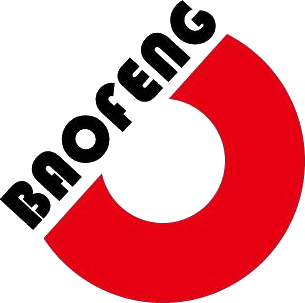Rubber kneading machine: principle, application and development
First, rubber kneading machine overview
Rubber kneading machine is an indispensable key equipment in the rubber industry, mainly used for rubber plasticizing, mixing and hot refining processes. As the front-end process equipment for rubber product production, the kneading machine applies shear force, extrusion force and heat to the rubber to transform the raw rubber from an elastic state to a plastic state, and at the same time realizes the uniform mixing of rubber and various compounding agents (such as carbon black, vulcanizer, accelerator, etc.).

After more than 100 years of development, the modern rubber kneading machine has evolved from the initial open mill to today's efficient, automated and intelligent closed rubber mixing system, becoming one of the important symbols of technological progress in the rubber industry.
Second, main types and working principles
1. Open mill (double-roller rubber mixing machine)
The open mill is the earliest rubber kneading equipment, consisting of two parallel and relatively rotating rollers. By adjusting the roller spacing and roller speed ratio (usually 1:1.1-1.3), a strong shearing effect is generated at the roller gap to plasticize the rubber. The open mixer has a simple structure and intuitive operation, but it is labor-intensive and causes serious environmental pollution. It has been gradually replaced by closed equipment.
2. Internal mixer (closed rubber mixer)
The internal mixer is the current mainstream rubber kneading equipment, consisting of a mixing chamber, a rotor, an upper ejector bolt, a lower ejector bolt, and a heating and cooling system. When working, two specially shaped rotors rotate relative to each other in a closed chamber, so that the rubber is sheared, squeezed, stretched, and folded in a complex flow field, achieving rapid and uniform mixing. According to the rotor type, it can be divided into:
Benbury type (elliptical rotor)
Meshing type (three-sided or four-sided rotor)
Shear type (specially designed high-shear rotor)
3. Continuous mixer
New equipment developed in recent years, such as the twin-screw continuous mixer, has realized the continuous production of rubber mixing, with the advantages of high efficiency, energy saving, and high degree of automation, and is particularly suitable for the production of large-scale single-formula products.
Third, key technical parameters and performance indicators
Volume: the main specification parameters of the internal mixer, ranging from 1L laboratory models to 650L industrial models
Rotor speed: usually 20-60rpm, high-speed internal mixer can reach 80-120rpm
Filling factor: 0.55-0.75, affecting production efficiency and mixing quality
Power configuration: from tens of kilowatts to thousands of kilowatts according to the model
Temperature control accuracy: modern equipment can reach ±1℃
Unit energy consumption: advanced models can reach 200-300kWh/t rubber
Fourth, application areas
Rubber kneading machines are widely used in:
Tire manufacturing (accounting for about 60% of all applications)
Rubber products (rubber hoses, tapes, seals, etc.)
Shoe material production
Recycled rubber processing
Special rubber (silicone rubber, fluororubber, etc.) processing
Fifth, technology development trend
Large-scale and high-efficiency: single-machine capacity continues to increase, and production efficiency continues to improve
Intelligent control: PLC and DCS systems are used to achieve precise control of process parameters
Energy saving and environmental protection: low energy consumption design, exhaust gas collection and treatment system
Adaptation to new materials: meet the processing needs of new rubbers such as high filling and nano-composite materials
Digitalization and Internet of Things: Application of Industry 4.0 technologies such as remote monitoring and predictive maintenance
Multi-function integration: a one-stop solution integrating mixing, granulation and drying
Sixth, key points of operation and maintenance
Safe operation:
Strictly follow the startup and shutdown procedures
Overload operation is prohibited
It is strictly forbidden to open the feeding door when the internal mixer is working
Process control:
Accurately control temperature, time and feeding sequence
Monitor power curve and torque changes
Regularly detect the quality indicators of mixed rubber
Equipment maintenance:
Regularly check the rotor wear
Keep the hydraulic system clean
Replace sealing elements in time
Regular maintenance of the lubrication system
Seventh, market status and prospects
The global rubber kneading machine market is mainly occupied by German Harburg-Freudenberger (H-F), Japanese Kobe Steel, and Chinese Dalian Rubber and Plastics. With the rapid development of the Asian rubber industry, the cost-effectiveness and market share of Chinese-made kneaders have been continuously improved, but there is still a gap in high-end models, intelligence level and core components.
In the future, with the development of emerging fields such as new energy vehicles and green tires, the demand for high-performance and low-energy rubber products will continue to grow, which will promote the development of rubber kneading technology in a more efficient, more precise and more environmentally friendly direction. At the same time, the in-depth application of digitalization and artificial intelligence technology is expected to completely change the face of traditional rubber mixing technology.




